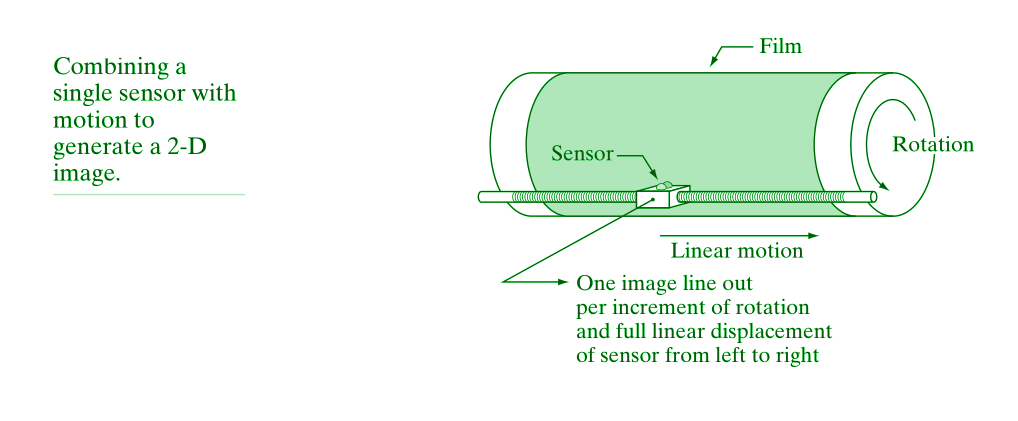Image acquisition method of most digital cameras
We should first discuss the image formation on human eye. Because the basic principle that is followed by the cameras has been taken from the way, the human eye works.
When light falls upon the particular object, it is reflected back after striking through the object. The rays of light when passed through the lens of eye, form a particular angle , and the image is formed on the retina which is the back side of the wall. The image that is formed is inverted. This image is then interpreted by the brain and that makes us able to understand things. Due to angle formation, we are able to perceive the height and depth of the object we are seeing. This has been more explained in the tutorial of perspective transformation.

As you can see in the above figure, that when sun light falls on the object (in this case the object is a face), it is reflected back and different rays form different angle when they are passed through the lens and an invert image of the object has been formed on the back wall. The last portion of the figure denotes that the object has been interpreted by the brain and re-inverted.
Image can be acquired in the below three way
- Image Acquisition Using a Single Sensor
- Image Acquisition Using Sensor Strips
- Image Acquisition Using Sensor Arrays
In this section we will discuss about the Image Acquisition Using a Single Sensor
Most of the images in which we are interested are generated by the combination of an illumination source and the reflection or absorption of energy from that source by the elements of the scene being imaged. We enclose illumination and scene in quotes to emphasize the fact that they are considerably more general than the familiar situation in which a visible light source illuminates a common everyday 3-D (three-dimensional) scene.
Similar to the human ratina, where we have only one cone type per spatial location, most digital cameras are today use a single sensor to capture color images The sensor is covered by an array matrix of color filters to allow the acquisition of different chromatic contents of the sence. In general, the filters transmit either blue, green. or red light.
The below figure shows the three principal sensor arrangements used to transform illumination energy into digital images. The idea is simple: Incoming energy is transformed into a voltage by the combination of input electrical power and sensor material that is responsive to the particular type of energy being detected.The output voltage waveform is the response of the sensor(s), and a digital quantity is obtained from each sensor by digitizing its response. In this section, we look at the principal modalities for image sensing and generation.

Single imaging sensor.
In the above image, single imaging sensor shows the components of a single sensor. Perhaps the most
familiar sensor of this type is the photodiode, which is constructed of silicon materials
and whose output voltage waveform is proportional to light. The use of
a filter in front of a sensor improves selectivity.For example,a green (pass) filter
in front of a light sensor favors light in the green band of the color spec-
trum.As a consequence,the sensor output will be stronger for green light than
for other components in the visible spectrum.

In order to generate a 2-D image using a single sensor,there has to be relative displacements in both the x- and y-directions between the sensor and the area to be imaged. Figure 2.13 shows an arrangement used in high-precision scanning, where a film negative is mounted onto a drum whose mechanical rotation provides displacement in one dimension.The single sensor is mounted on a lead screw that provides motion in the perpendicular direction. Because mechanical motion can be controlled with high precision,this method is an inexpensive (but slow) way to obtain high-resolution images. Other similar mechanical arrangements use a flat bed, with the sensor moving in two linear directions. These types of mechanical digitizers sometimes are referred to as microdensitometers.
Another example of imaging with a single sensor places a laser source coincident with the sensor. Moving mirrors are used to control the outgoing beam in a scanning pattern and to direct the reflected laser signal onto the sensor. This arrangement can be used also to acquire images using strip and array sensors,which are discussed in the following two sections.
































